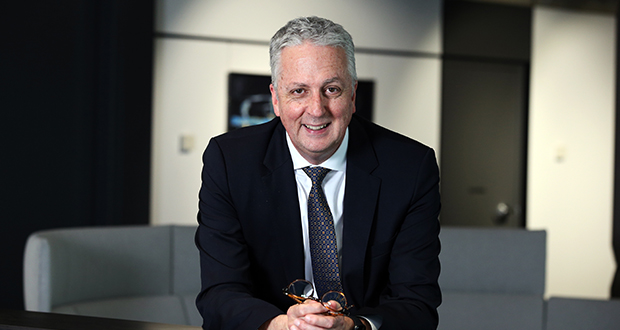Was it inevitable that we would get to a situation where all Australian universities were converging as copies of each other? Looking back, it appears the policy settings, and the way markets were managed, created little alternative in the pre-2020 days of growth.
The uncapping of student places unleashed expansion in domestic numbers and burgeoning class sizes. The growing international student market solved a public funding problem. Government would no longer fund growth in research and physical infrastructure so international students and domestic growth had to.
The business model was based on reputation and scale. Reputation was primarily measured by research. Similarities in methodologies, in proliferating new rankings, prioritised research. Our core business became enhancement of research quality. This became defined by easily measurable things like citations, research income and PhDs awarded.
The whole rankings industry became geared towards long-term evidence of these traditional measures of research excellence and skewed university culture towards them. Strategic moves were hiring in research capacity more than changes to the business model. Leadership appointments were driven by research track records and academic respectability, not experience of disruption or external engagement.
But the engine of research growth to grow reputation needed fuelling. Research costs universities more than for which they are funded. The overhead of research costs in infrastructure, consumables and human capacity far outweigh what at best are the marginal funding of projects by government, industry and philanthropists.
It needed scale from uncapped domestic numbers and international fee-paying students. And scale we got. To see the average Australian university reach a population of over 40,000 students and international students be typically represent more than 30 per cent changed culture and student and staff experience. It locked in a single business model.
There were minor plays into executive and corporate education, new online learning markets, philanthropy and industry engagement. But these were sideshows. They did nothing to disrupt the ubiquitous strategy that has seen all 39 Australian universities now look more like each other than ever before.
They competed on the same playing field of rankings that attracted students, that gave fee income, that funded research, that raised rankings. It is partly why so many of our universities do so well in the latest QS subject rankings.
We have all been trying to be the same, and we have done it well, until now.
Because now the world has changed. The pandemic has been the tipping point. But the tide was going out for a while. And as Warren Buffet is quoted as saying, “its only when the tide goes out that you can see who has been skinny dipping”.
The lack of empathy for the plight of universities in government and public minds has been a long time coming. And we have lacked experience in relating to governments in research pedigree leaders and peak bodies principally advocating for business model status quo.
Growth in class sizes, and relegation of student experience to a minor indicator, led it to be a hygiene factor, not a differentiator. The growth in casual staff contracts to serve teaching needs, and outsourcing of student support to B2B service provision by outside players, closed our minds to new business models. It stopped us addressing the larger demographic, societal and economic behaviour forces at play of globalisation and personalisation.
This provided space for our most recent HEDx podcast guest, Jack Goodman of Studiosity, to build an EdTech start-up providing student support to 70 per cent of Australian universities. His business, and its service, filled a vacuum of student need in settings of scale.
We now typically have more than 40,000 students feeding research machines, but have a poor understanding of their needs and preferences as higher education consumers. We built physical infrastructure and offered long and expensive courses in facilities used for fractions of their asset lives.
It was a recipe ripe for disruption long before 2020. And then we experienced our biggest ever shock to funding. We lost much of our casualised teaching workforce. We plunged many remaining staff, after the first wave of redundancies, into chaos. And we tried to turn them into digital producers. We balanced a return to campus with planning for a new normal, and tried to retain some executive bandwidth for the disruption happening around us, and the search for a new business model.
No wonder we have seen 18 Australian VC positions in transition since the start of 2020. Those stepping in, and carrying on, need help. They need to find new ways of building reputation, beyond research rankings. There is much scope for brand differentiation out there in a market crying out for improved experiences. They need guidance in strategy, structure and cultural evolution to rebuild a thriving business.
Other sectors that have been disrupted through technology to serve new market demands include broadcasting and entertainment. They have learnt lessons in how to manage transformation by building a leadership culture that prioritises innovation. AppointIng Mark Scott to lead our oldest university, with his experience of transforming the ABC through reduced funding and digital disruption, is the clearest sign yet that the days of 39 peas in a pod could be numbered.
Has the most unlikely of places just changed the menu? How helpful in a chancellery right now is experience of leading disruption through falling revenue, with an antagonistic government funder? More helpful than a PhD, I suspect.
Close to 2000 people viewed a LinkedIn poll I posed on this question in six hours on a Sunday afternoon, so it has clearly got us all thinking. There has never been a more urgent time for university leaders to adopt new mindsets, and seek and accept help. They need assistance in differentiating, building an innovation culture, and exploring new business models.
Their research achievements and academic reputations got them here. They will need to change to get them there. We may well look back on these times as when we changed higher education for good.
It is a great time for us at HEDx to be working with some of the first movers in making this happen.
Martin Betts is Emeritus Professor at Griffith University and founder of HEDx.
Do you have an idea for a story?Email [email protected]
 Campus Review The latest in higher education news
Campus Review The latest in higher education news


